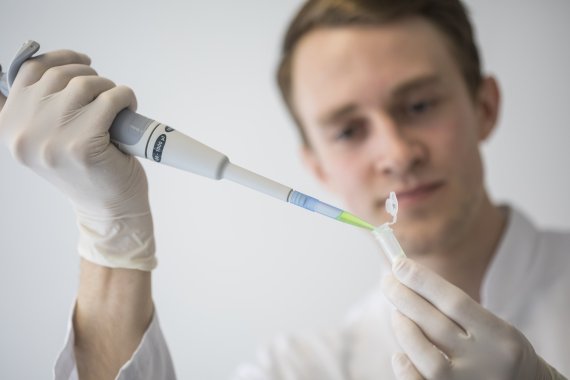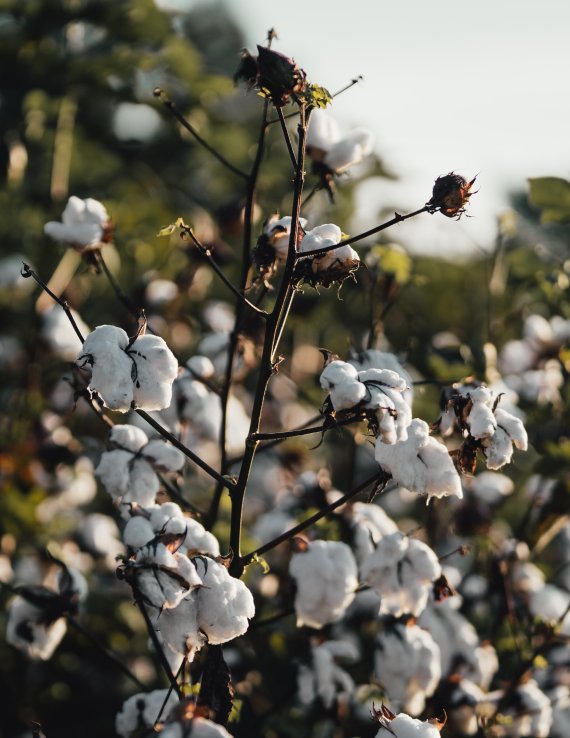
With recycled and performance yarns featuring in the polyester and nylon sectors, there is no definitive difference in the visual aspect of the final textile, be it a woven or a knit, between the virgin offering or the alternatives.
However, under the microscope this can easily be confirmed as unique cross sections for performance yarns and modified molecular structures and embedded IDs can be recognized by third-party testing. For natural fibers, it is a different story, and no more so than conventional cotton VS. organic cotton.
The textile industry has often fallen into disrepute because its conditions take neither health nor sustainability standards into account. Poor working conditions prevail in developing countries, the manufacturing process of textiles requires a lot of water and the use of pesticides is anything but harmless.
Due to these circumstances, more and more companies are taking it upon themselves to offer sustainable alternatives. There are also various seals that promise consumers quality as well as sustainability standards. Organic cotton is also one of them and is the proof that even rather controversial materials, namely cotton, can be sustainable.
Organic Cotton is sustainable cotton produced in accordance with the guidelines of organic farming. During the production process, pesticides, synthetic chemicals and fertilizers are avoided. However, the sustainability aspect is controversial, as cotton requires many resources and is only necessarily produced under fair working conditions.
The answer is easy, absolutely none when it comes to the touch and appearance of a cotton product. The only difference between organic and conventional cotton is the way the cotton is grown, with organic cotton crops using methods and materials that have a low impact on the environment and the seeds used. According to the Organic Trade Association (OTA), production systems of organic cotton replenish and maintain soil fertility, reduce the use of toxic and persistent pesticides and fertilizers, and build biologically diverse agriculture.
Organic cotton farmers can obtain third-party certification from independent organizations, but once this organic fiber is passed down the textile chain, there is no obvious indication that the cotton apparel the consumer buys is made from conventional or organic cotton.
In terms of sustainability, organic cotton is not as convincing as viscose, for example, but has various advantages compared to conventional cotton. These are among others:
- Due to the guidelines of organic cultivation, much less water is needed for the production of organic cotton.
- Sustainability seals are also a promise to consumers
- Organic cotton is less harmful to health and the environment
- High costs for pesticides are saved
In addition to these advantages, however, there are also various disadvantages that cannot be overlooked. Even though organic cotton is more sustainable than the conventional variety, consumers should keep the following in mind:
- Cotton requires a lot of water
- Growing in developing countries means less transparency regarding working conditions
- Not every seal promises advantages in terms of sustainability
So when buying organic cotton products, it's important to look carefully at where the product comes from and which seal it carries. Nevertheless, you can say that organic cotton is a better alternative to the classic variant, because it saves water and is less harmful to health and the environment.
Third-party certification organizations verify that organic producers use only methods and materials allowed in organic production. Organic cotton is grown from non-modified seeds without the use of toxic and persistent pesticides and synthetic fertilizers.
With cotton one of the most important fibers globally, organic cotton only accounts for less than one per cent of the annual global cotton crops grown. As sustainability pushes forward, organic cotton is becoming more in demand. How to determine the authenticity of organic cotton from the fiber to the textile stage can be a problem, from contaminated seeds, to cross pollination during cultivation, through to contamination of cotton fibers during textile processing.

The Hohenstein Group, an accredited test laboratory and research institute that works with the testing and certification of textiles, has developed reliable detection methods for an essential parameter of organic cotton, with the cotton used reliably tested for genetic modifications (GMO-genetically modified organism).
According to the Hohenstein Group, organic cotton requires, amongst other things, the exclusion of genetically modified plants. Despite this, genetic modifications are repeatedly found in textiles that are labelled organic. The detection system has been specifically optimized for textiles. Testing can be carried out on everything from raw cotton, yarns and fabrics, to ready-made end products.

The testing contains two steps. First the sample is crushed. The cotton fibers are then mechanically and enzymatically broken down. The genetic material (DNA) is separated from the fibers and purified through a multi-stage process.
If a specific target sequence (marker gene) is found in the DNA, that indicates a genetic modification, molecular biological evidence is obtained. Control reactions serve to verify unaltered cotton DNA and to also exclude false-negative results.
Now through the Hohenstein GMO testing, textile companies, retailers and ultimately consumers are reassured that end products are manufactured from organic cotton, confirming the traceability of a true product from the soil to the store.
The sustainability factor is often criticized with cotton, and not without reason. The fabric comes from emerging and developing countries with poor working conditions, and cotton also requires a lot of water. However, the organic variant proves itself (partially) as an alternative, because there are reliable seals that confirm sustainability and worker friendliness. We can therefore answer the in-depth question of whether organic cotton is a sustainable alternative with a "yes", but compared to other textiles, the fabric still offers disadvantages.
- ISPO awards
- Mountain sports
- Bike
- Design
- Retail
- Fitness
- Health
- ISPO Job Market
- ISPO Munich
- ISPO Shanghai
- Running
- Brands
- Sustainability
- Olympia
- OutDoor
- Promotion
- Sports Business
- ISPO Textrends
- Triathlon
- Water sports
- Winter sports
- eSports
- SportsTech
- OutDoor by ISPO
- Heroes
- Transformation
- Sport Fashion
- Urban Culture
- Challenges of a CEO
- Trade fairs
- Sports
- Find the Balance
- Product reviews
- Newsletter Exclusive Area
- Magazine






